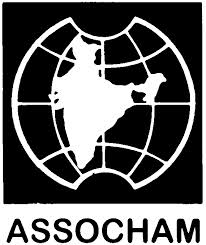 In order to ensure secure, reliable and adequate long-term supply of raw materials for the domestic gems and jewellery industry, there is an urgent need for India to engage directly with producer countries through diplomatic channels such as free trade agreements (FTAs) with countries possessing key raw materials, an ASSOCHAM study said today.
In order to ensure secure, reliable and adequate long-term supply of raw materials for the domestic gems and jewellery industry, there is an urgent need for India to engage directly with producer countries through diplomatic channels such as free trade agreements (FTAs) with countries possessing key raw materials, an ASSOCHAM study said today.
“Securing raw materials at competitive prices is an issue of survival for India’s gems and jewellery industry as they are mainly sourced through imports considering that domestic source of raw materials is very weak,” noted a study titled ‘Import Dependency of Indian Manufacturing,’ conducted by The Associated Chambers of Commerce and Industry of India (ASSOCHAM).
“Entering into FTAs with countries possessing raw materials, encouraging mining exploration or investment in major African countries by way of guarantees to investors etc. and investment in overseas diamond mines by the consortia promoted by trade are certain possible options available in this regard,” suggested the study prepared by The ASSOCHAM Economic Research Bureau.
It is necessary to make the deal for raw materials at a very fair price, as it directly affects the cost of production which subsequently adds to the cost of finished products’ and adversely affects the gems and jewellery exports and does not let India stand in the competitive international market.
About 90 per cent of raw materials for the industry are imported and rough diamonds alone account for over 50 per cent of India’s total gems and jewellery raw material imports.
India’s known diamond and gold mines have been depleted due to continuous exploitation, while others like those of emerald, sapphire, ruby, and others have not been exploited systematically.
“As raw materials are not being sourced directly from the mining country, the prices paid by Indian industry are high,” said Mr D.S. Rawat, secretary general of ASSOCHAM while releasing the chamber’s study.
“Indian gems and jewellery industry largely depends on imports of raw materials because the indigenous gems mineral production is far short of the actual requirements,” said Mr Rawat. “As such domestic gems and jewellery industry remains extremely susceptible to external developments such as oscillating demand, commodity prices and exchange rates owing to India’s global dependence in terms of import of raw materials.”
India’s neighbour China has of late been pushing for direct deals with African governments for supply of rough diamonds which may soon result in China emerging as a major diamond manufacturer.
Besides, labour rates in China are comparable if not lower to that in India, as such it is a worrisome for the domestic industry especially for Surat as shifting of business to China would further impact the employment scenario in the industry.
